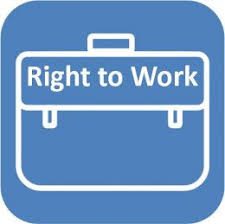One of the biggest challenges facing small employers revolves around managing the long term sick and the disabled.
To help clarify employers’ duties, the HSE has published new guidance. It is based around the principle that every member of staff is entitled to good health and safety practice, especially those who are disabled or suffer from protracted health conditions.
As we face a talent shortage, this new guidance is focused on support for such workers, helping them find and stay in work.
They have split their key principles into 8 sections – an overview and then 7 crucial areas that are explained in depth, and which can be read on their website here.
One to one consultations and conversations
In all situations, employers need as much information as possible about their workers’ situations and challenges.
So, start with open and honest conversations with them, which typically start at return to work meetings, and during periods when people are off on long term illness. Policies should make it clear that it is an employee’s responsibility to keep in regular contact with their employer, and Managers need to not shy away from such conversations.
These are often more effective if held on a one-to-one basis, allowing Managers to listen carefully to what the employee feels they need, and agreeing a course of action with them.
Once the employer understands a worker’s needs, they can make suitable, reasonable workplace adjustments. This might include significant changes to the way they work, or support for their return to work.
Supportive and “enabling” workplaces
The HSE places great emphasis on how the right workplace culture can create the right environment for all workers to flourish.
But this does not just happen because the organisation says so; Managers need to be accessible, so they can listen and help their staff. In particular, they need to understand the pressures and challenges affecting staff at work and outside.
The HSE also talks about the dilemma we all face, knowing enough to be able to help and to remove barriers that disadvantage them, while respecting worker privacy and confidentiality and dignity.
They also suggest signing up to the Disability Confident Employer Scheme.
Inclusive approach
Truly inclusive workplaces can lead to increased productivity, a larger talent pool, greater creativity and more innovation.
Workplace practices must also be fit for purpose. With employers giving clear, concise, easy to understand instructions that can easily be followed by all workers. Such an approach is crucial to identifying and removing workplace barriers.
Providing additional advice
For the employee, the government provides some good advice of their own – Access to Work.
But employers should not rely on just this; they should have their own advice schemes. Provided, where appropriate, through access to their own HR professionals, and not forgetting Occupational Health providers.
Providing access to free counselling services is an increasingly useful benefit for employees, and is not as expensive as many employers believe, if you shop around.
Work barriers and their impact
Employers need to step back and look at some of the work barriers people face. Not only do these affect recruitment, they also prevent the effective integration of new recruits, and continue to affect staff throughout their careers.
Focusing on what workers can do is far more effective and encouraging than highlighting what they cannot do.
The HSE discusses barriers that are physical – they cite as examples poor access to buildings, or poor toilet facilities, or even, for remote workers, video calls with no subtitles. Perhaps the organisation has not invested in or enabled IT that supports text reading.
Or, the barriers can be organisational – perhaps your sickness and absence policies are too rigid and do not consider each person with their own individual needs. They can be attitudinal – assuming workers cannot add anything in certain areas, or that they would not want to attend social gatherings.
Workplace adjustments
Many employers struggle with the concept of workplace adjustments. But remember, these have to be reasonable and putting them in place may be much less disruptive than having to recruit and train new staff members.
And, many adjustments do not really cost anything, they just need a new mindset. Things like new shifts or work patterns, assistive software, a phased return to work and improved communications. And, quite often, the solution is a temporary one anyway, especially if the long-term convalescent returns to full productivity, or the disabled worker needs time to adjust.
The HSE recommends recording such agreed adjustments in a ‘passport’, which we would call a return to work plan that is regularly reviewed thereafter. This is especially useful when workers’ jobs or Line Managers change.
Reviewing modifications
When a work activity or workplace changes, make sure that you review them. Further adjustments may be needed, or they may cease to be relevant.
Communications
Some workers may have sensory problems, dyslexia or even have never learned to read.
So be careful when you know this to be the case. Make sure you look at the format, medium and content. Useful support tools can include British Sign Language, Easy Read, and audio to text.
There should also be sufficient contrast levels between the background and text. Formats must also be accessible to screen readers/voice-overs and other assistive technologies.
Support for Managers
Managers need support too. Do not forget to give the appropriate training to understand how to support their staff. And, make sure they have the right support when team members are not as productive as they might be.
Sickness absence and a return to work
In these challenging times, it is sometimes tempting for staff to just plough on regardless. Especially when sickness policies mean absence will make a real impact on their earnings.
Likewise, active support for an absent worker encourages a return to work. It reduces the risk of someone eventually stopping work altogether, especially if they have been off for a long time.
Contact during sickness absence
Keep in touch. Not only do you have an interest in your workers welfare, you also have a responsibility to them. Regularly check any worker on sickness absence, assessing their wellbeing and making them feel valued and remembered.
Occupational health support
Occupational health services can help with workplace assessments and adjustments, advice on referrals to rehabilitation and support services, advice on returning to work and help to promote good health.
A return-to-work plan
A crucial part of any long-term sick employee’s reintegration. It should be prepared with their input and agreement before they return to work.
Workers need not necessarily resume their normal levels of activity and a supported return can aid their recovery.
Comment by BackupHR
The HSE have long been criticised for overly focusing on the prevention, where possible, of physical health caused by accident or injury, and have only more recently focused on issues such as mental health.
With the Government also vocalising on wanting to encourage more long-term sick people back into the workplace, this document is welcome, if somewhat tardy in its appearance.
Our Consultants would be pleased to advise you on any element of the issues arising from this newsletter.











